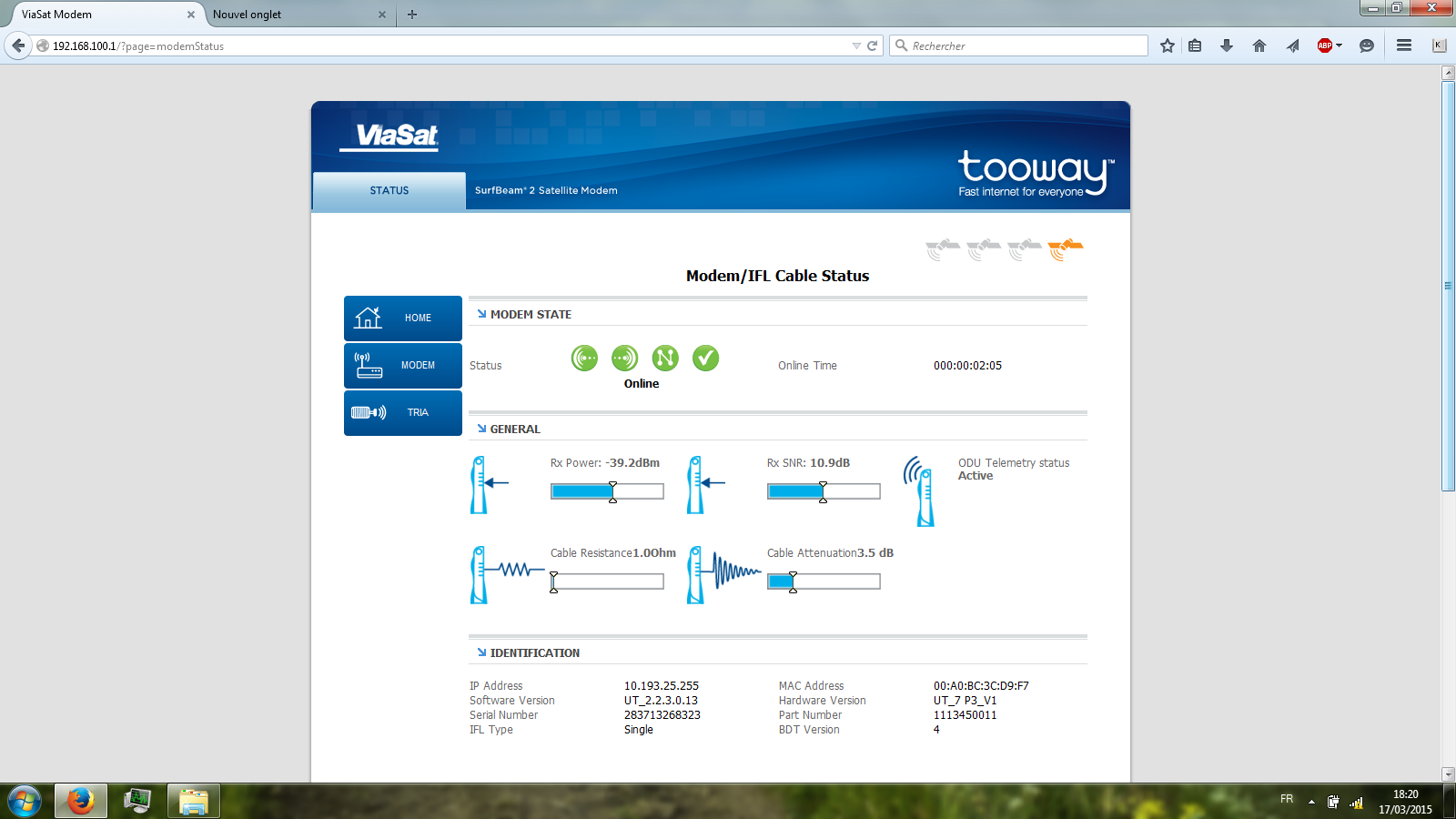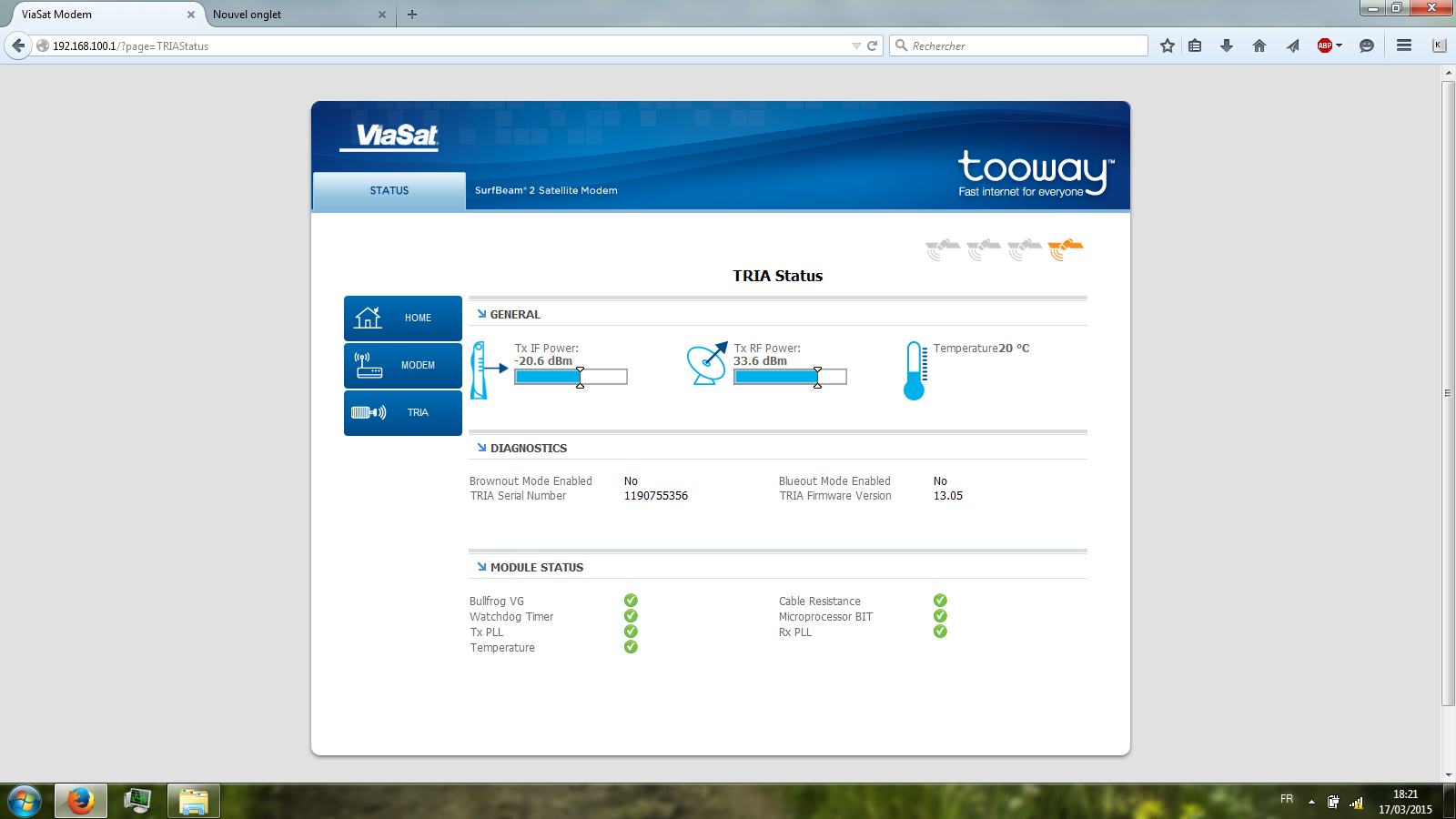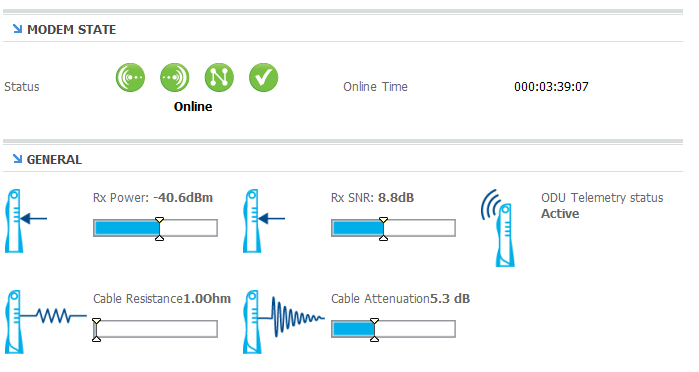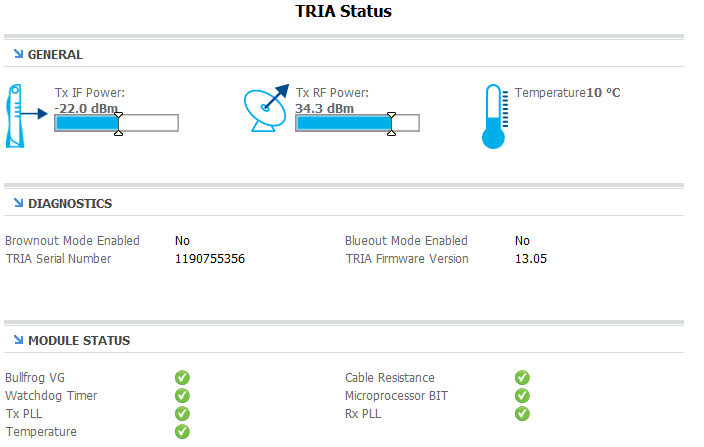B Satellite link¶
Pointing of the antenna¶
- Table of contents
- B Satellite link
After some experiments, we have confirmed that the main factor of the SNR value is the correct pointing of the antenna as expected. Experimental uses have show that we may point the antenna to a little lower angle of elevation than expected (37-38 instead of 39-40 as asked by the satellite position estimation) This can be due to an error of the position calculation, some deviations on the structure of the antenna or improper antenna montage by the user.
We advice to spend some time with the antenna pointing in order to get the higher SNR. The antenna sign of connection is not a consequence of the best link, is just a consequence of the possibility of setting up the link. That means that we don't have use to follow the signals from the Tria but add some time and effort to set a proper link.
From our experiments we got values between 5 and 10.3 dB of SNR after the connection with low shifts of the elevation and the azimuth.
Clear sky conditions¶
Under clear sky we have obtained this characteristics:
And for transmission:

Low rain conditions¶
In the other hand, under rain conditions we had the following results:

We can compare it with some an almost clear sky conditions, with a 1.5dB improvement of the SNR

And for the transmission:

With the following available BW:

Conclusions¶
We have to focus in the fact that the most important factor to have a good link is the pointing of the antenna. While the rain may attenuate the signal some dBs, we have seen that the satellite from our provider is probably running ACM, which definitively points out the pointing of the antenna as the main factor. We can see as an example, that the transmission power is lower with clear sky.
